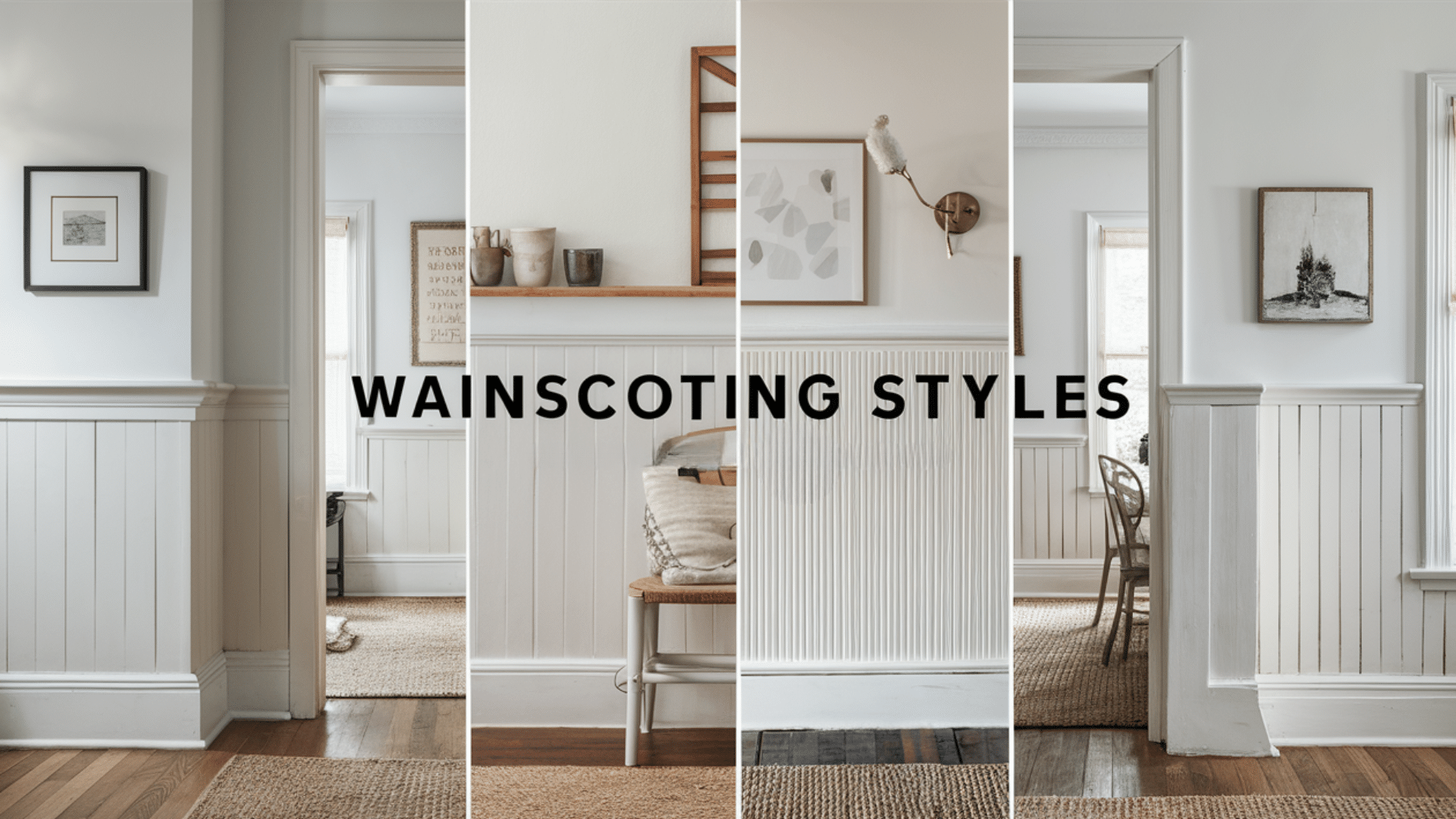Looking to add some character to your walls but feeling overwhelmed by options? You’re not alone.
In this guide, I’ll walk through different wainscoting styles that can transform any room from boring to beautiful. If you’re renovating a century-old Victorian or adding beauty to a new build, there’s a perfect wainscoting style waiting for you.
I’ve spent years in home renovation, helping hundreds of homeowners make smart design choices. After installing wainscoting in countless homes, I’ve learned what works best for different spaces and budgets.
By the end of this blog, you’ll know:
- Which style matches your home’s architecture
- What materials work best for your skill level
- How much each option typically costs
No more staring blankly at Pinterest boards or feeling lost at the hardware store. Let’s find the wainscoting style that will make your home shine.
Understanding What Wainscoting Is?
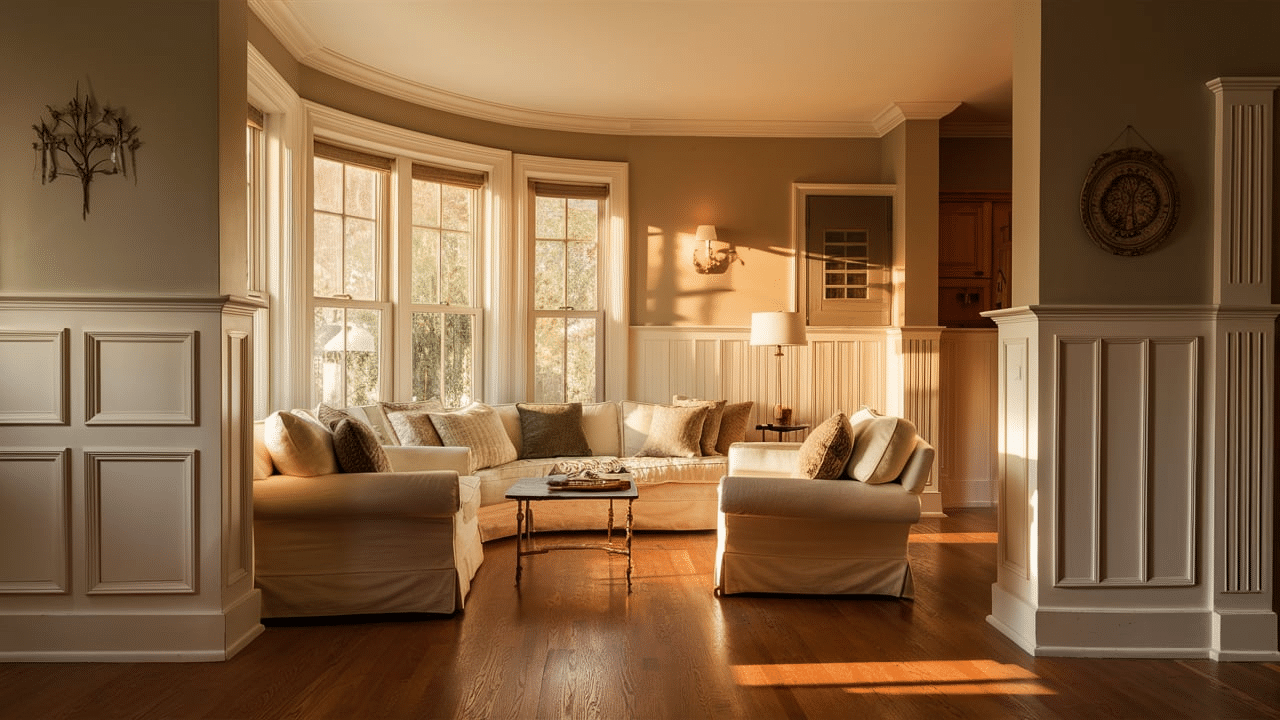
Wainscoting is a type of wall covering added to the lower part of walls. It helps protect walls from damage and also makes a room look better.
Wainscoting usually covers about one-third of the wall from the bottom up, but this can change depending on the room and design.
There are different kinds, such as raised panel, flat panel, beadboard, shiplap, and more. Each one has its simple look. Some styles feel more old-fashioned, while others are more plain and neat. Wainscoting can be made from wood, fiberboard, or other strong materials.
People use it in places like living rooms, hallways, kitchens, and bathrooms. It adds texture to plain walls, covers up scratches, and helps bring the room’s look together. It’s useful and makes the space feel more finished.
Popular Wainscoting Styles
Wainscoting adds beauty and character to any room, and there are lots of styles to choose from. If you like a classic look or something more modern, there’s a style that fits your space. Let’s take a look at some of the most popular wainscoting styles people love today.
1. Raised Panel Wainscoting
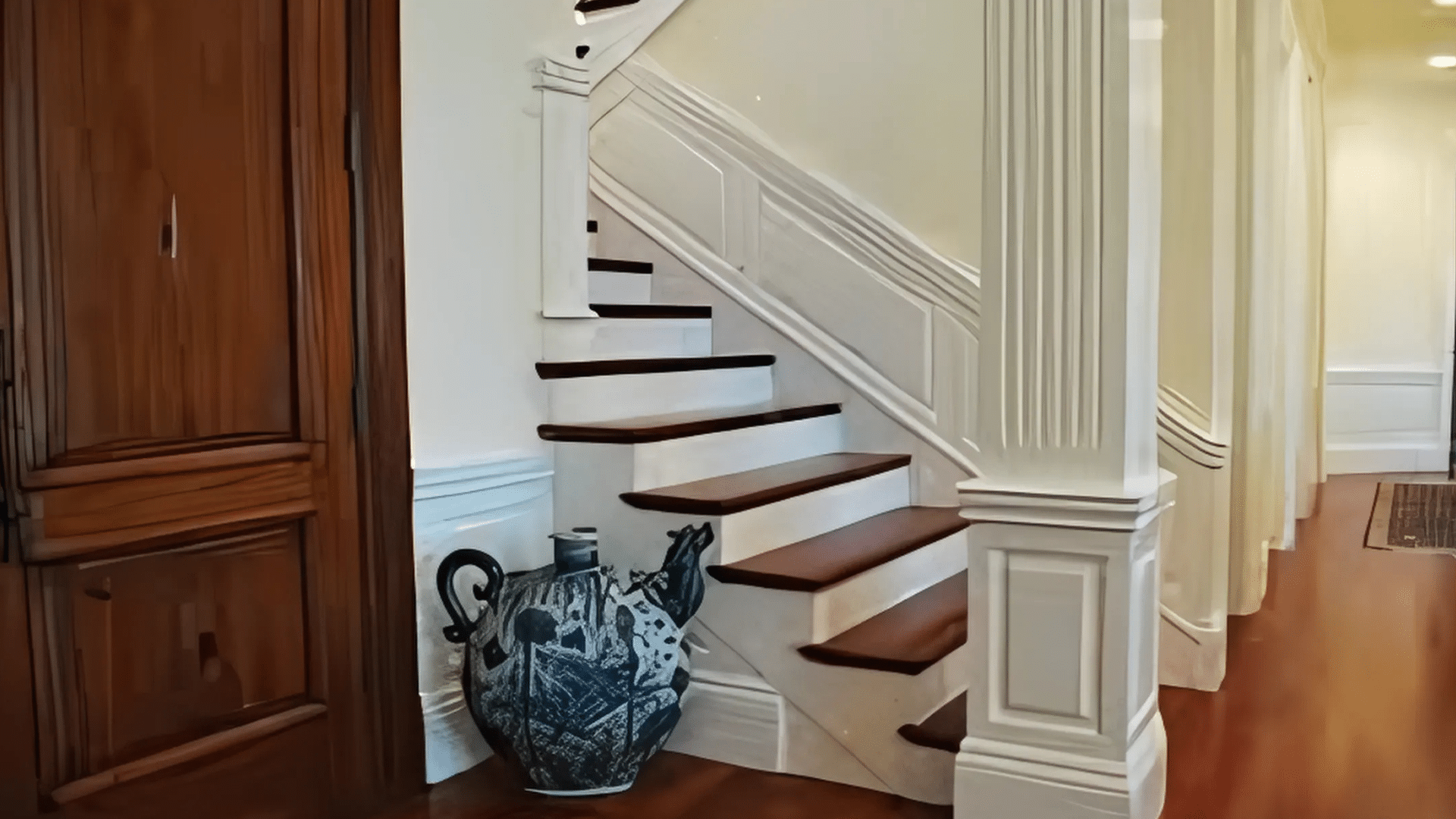
Raised panel wainscoting features slanted edges with a central raised section that adds depth and texture to the wall. This style has a classic, traditional look, often seen in older, more formal homes.
The raised sections stand out, creating a detailed, nice design. It’s a popular choice for those wanting to add a touch of timeless beauty to a space.
Raised panel wainscoting was used in colonial-style homes and other traditional buildings in the past. It was seen as a sign of skill and quality.
This style continues to be a favorite because it is both beautiful and useful. It protects walls from wear while improving a room’s overall look.
Raised panel wainscoting works best in formal spaces like dining rooms, entryways, and living rooms. Its detailed design complements traditional, classic décor, especially when paired with older-style furniture and deep color schemes. It can also be used in hallways or larger rooms to create a nice, structured look.
2. Flat Panel Wainscoting
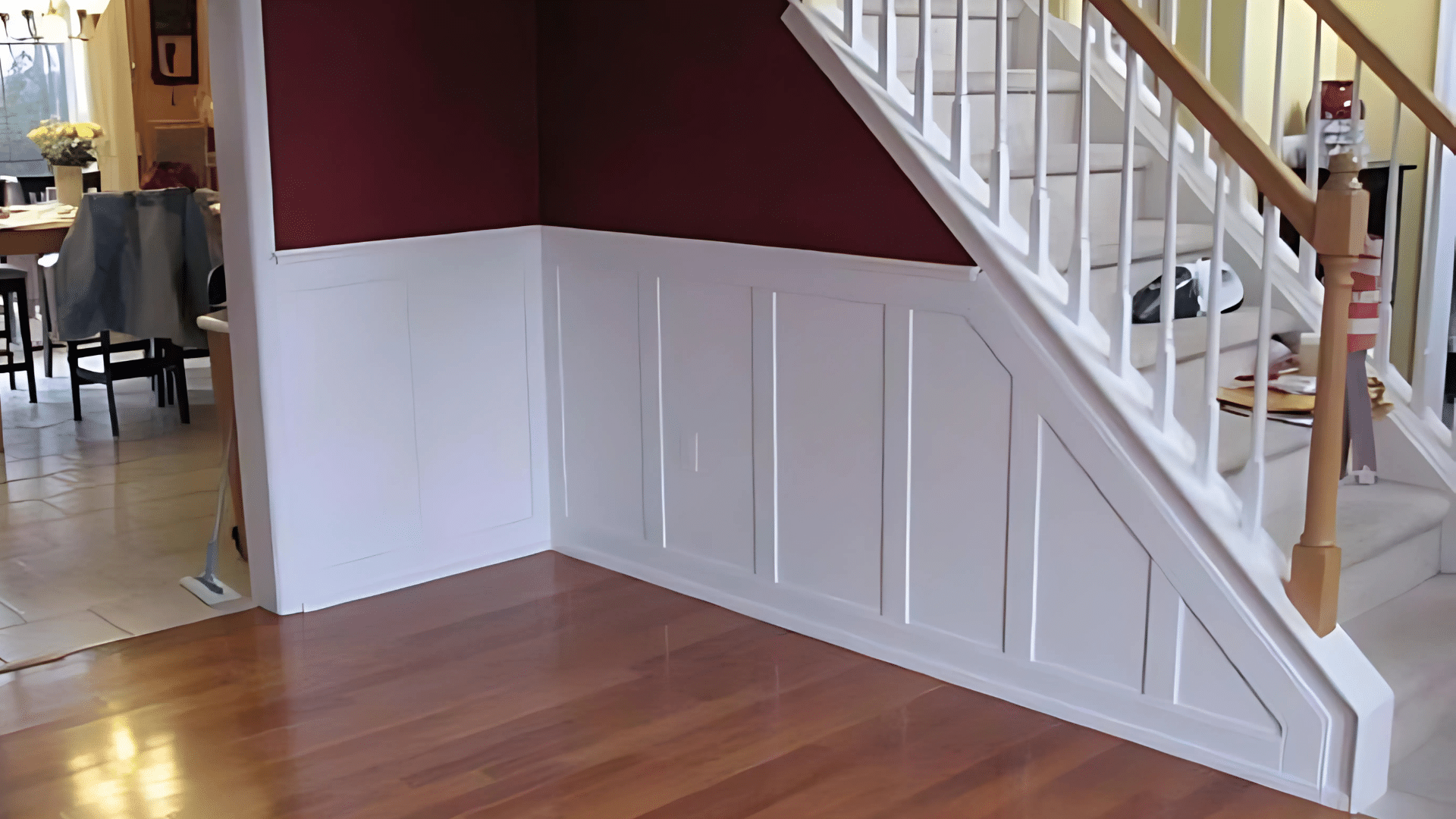
Flat panel wainscoting is a smooth design that features flat, plain surfaces without any angled cuts or raised parts. This style is simple and clean, with a plain feel that’s perfect for modern homes, instead of fancy details.
It focuses on straight lines and a neat appearance, making it a great choice for people who want a quieter and more up-to-date look.
The flat panel style creates a smooth, neat look while still adding texture to the walls. It’s often paired with other simple or modern design elements, allowing the wall feature to blend easily into a room’s overall look.
Flat panel wainscoting works great in modern living rooms, bedrooms, and kitchens, especially in spaces where a clean, open look is wanted. It pairs well with light, plain colors and modern furniture.
This style is also ideal for homes with open floor plans, as it doesn’t take over a space but still adds a bit of texture and class. It’s perfect for those looking for a simple, modern touch in their rooms.
3. Beadboard Wainscoting
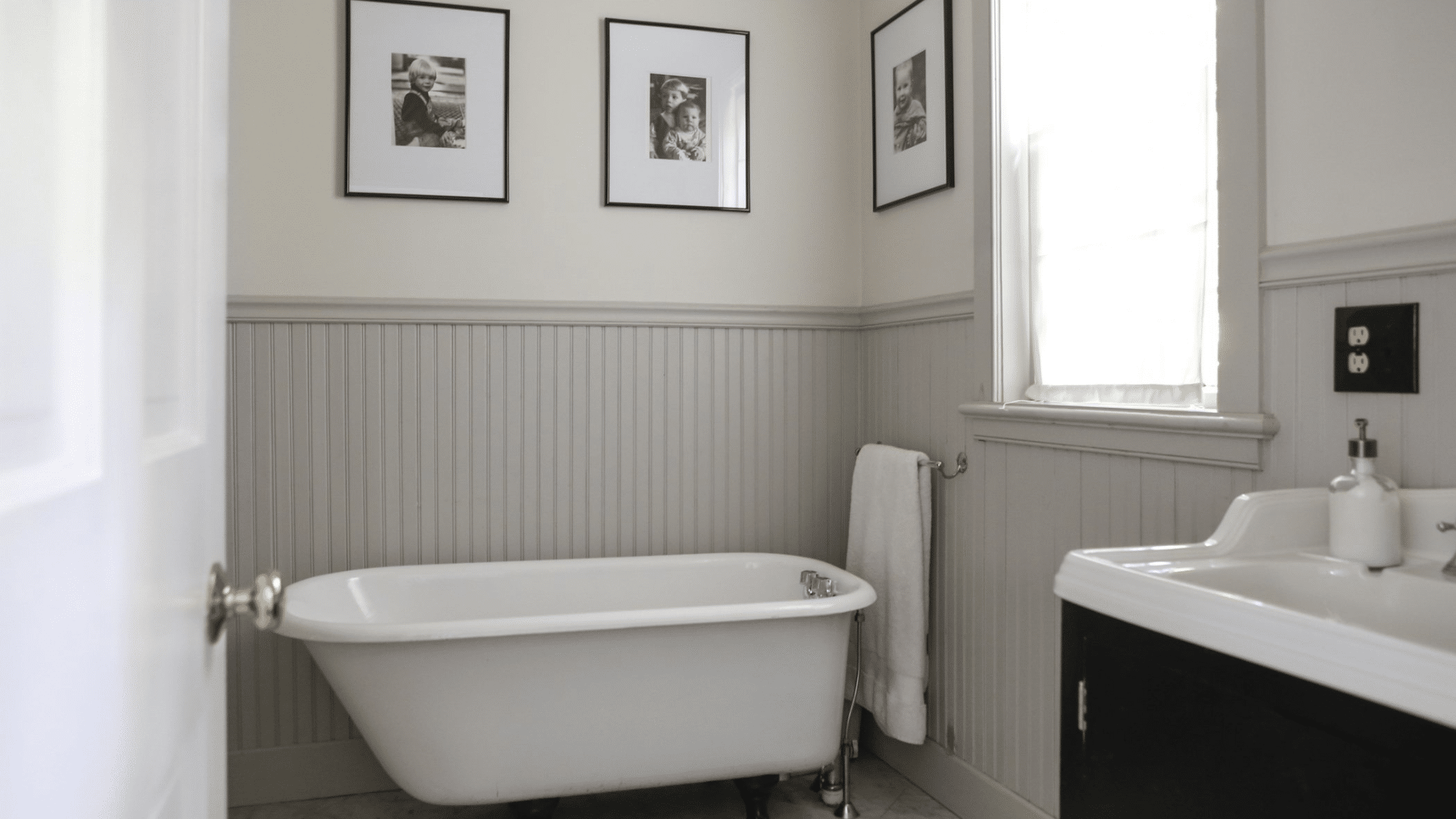
Beadboard wainscoting consists of vertical planks with uniform grooves or “beads” along the edges. These grooves run down the panels, creating a textured look.
Thanks to its relaxed, traditional touch, this style is often associated with cottage, coastal, and country-style homes. The grooves give it a light, breezy feel, making it perfect for spaces that want a bit of added character without feeling too heavy.
Beadboard is a classic choice that connects well to a casual or old-fashioned style, making it a popular option in more easygoing or beachy designs. Beadboard wainscoting is ideal for kitchens, bathrooms, and entryways, where it adds a nice touch without taking over the space.
It works especially well in coastal or farmhouse-style homes and can also be used in cottage-themed bedrooms or hallways to bring in a relaxed, friendly atmosphere.
4. Board and Batten Wainscoting

Board and batten wainscoting uses wide boards placed next to each other, with narrow battens covering the seams. This creates a textured, layered look that adds depth and interest to walls. The design emphasizes bold, straight lines and vertical panels, which makes it stand out.
Board and batten is often seen in rustic and traditional homes, but it can also work in more modern settings when paired with the right décor. This style brings a simple yet strong visual impact to any room, offering both strength and good looks.
Board-and-batten wainscoting is perfect for living rooms, hallways, entryways, and kitchens. It gives a structured look to large, open spaces or can bring a cozy, grounded feel to smaller rooms. It’s great in homes with farmhouse, traditional, or rustic interiors but can be adapted to modern homes with a clean finish.
5. Shaker Style Wainscoting
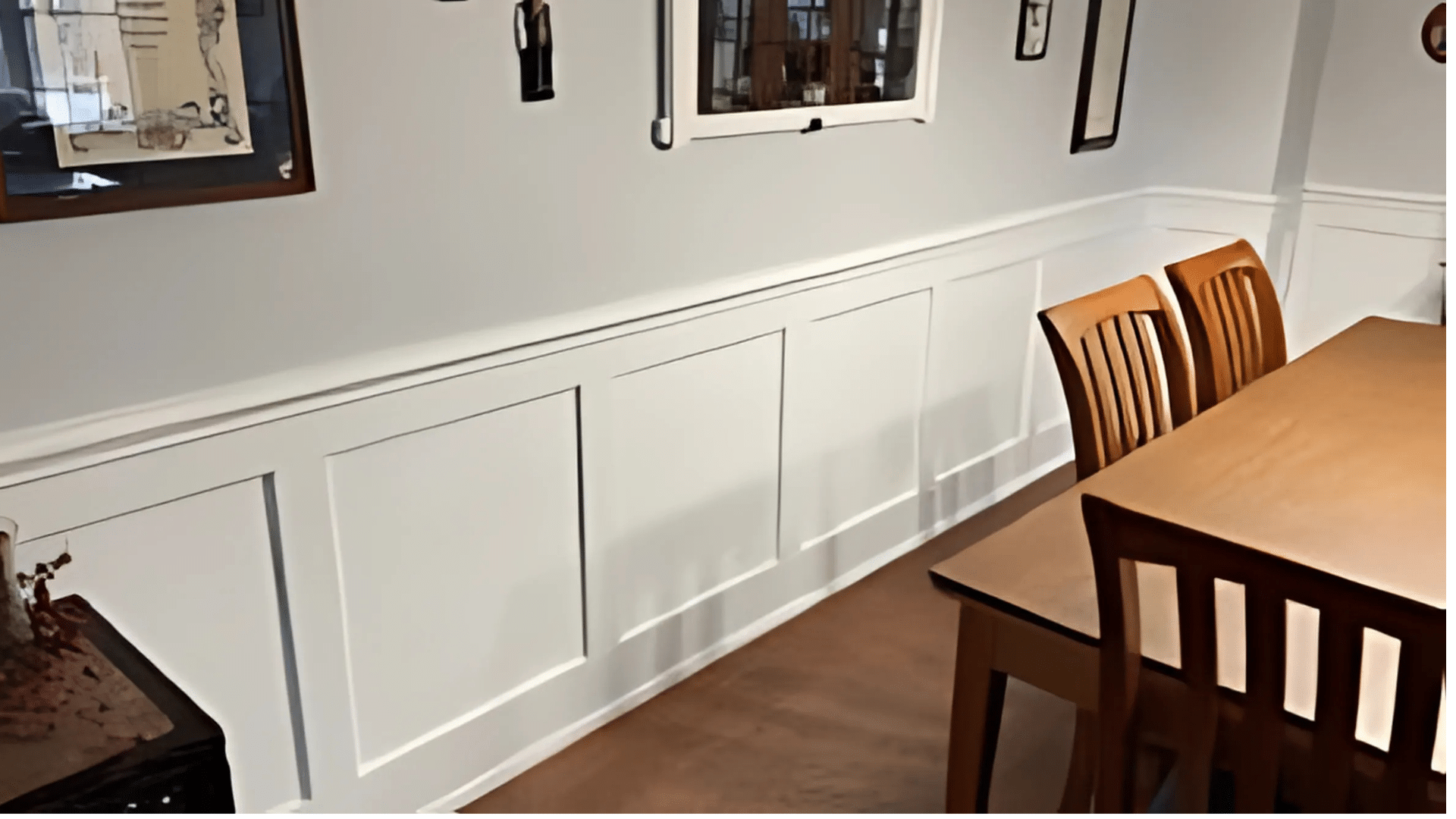
Shaker-style wainscoting is known for its simplicity and plain lines. It typically features flat panels with no raised details, giving it a clean, straightforward look. This style is influenced by Shaker craftsmanship, which focused on function and simplicity.
Shaker wainscoting has lasting appeal and works well in homes that value simplicity and low-key beauty. This style focuses on quality and skill, with minimal decoration and clean lines.
Shaker-style wainscoting works best in modern living rooms, dining rooms, and bedrooms. It’s ideal for those looking for clean, simple spaces that still have character. It pairs well with modern, up-to-date, and in-between décor styles.
6. Picture Frame Wainscoting

Picture frame wainscoting uses rectangular frames to create a framed look along the walls. This design copies traditional picture molding, allowing homeowners to show artwork or photographs within the panels. It adds a unique touch to any room and creates a nice, formal look with clean, clear edges.
This style uses frames around flat panels to create visual interest while maintaining a clean design. Picture frame wainscoting is perfect for living rooms, hallways, or dining rooms, where art or photographs can be displayed within the panels.
It works well in traditional and mixed styles, offering a formal, fancy look. This style also suits rooms with classic or old-style furniture and décor.
7. Overlay Wainscoting
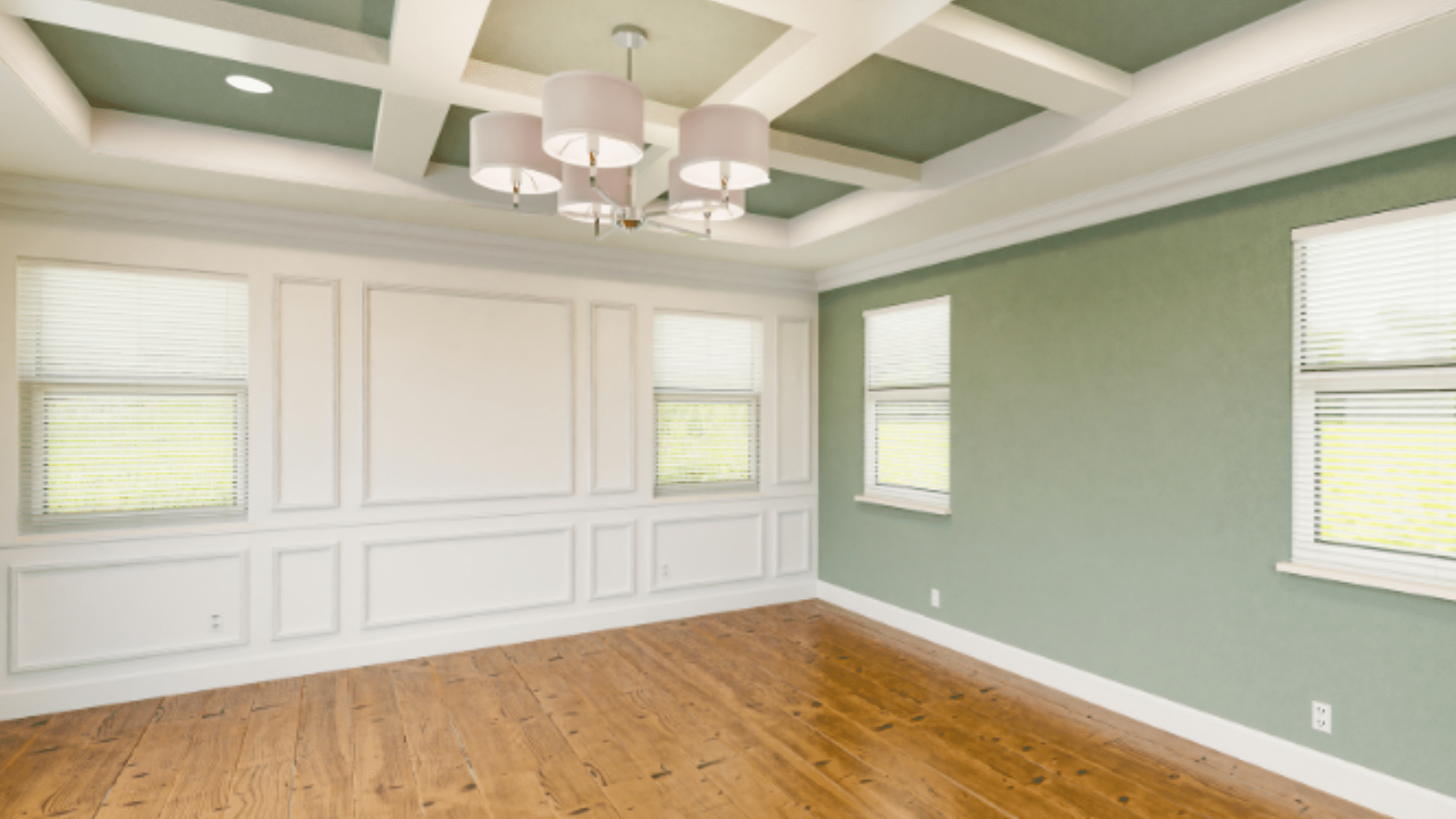
Overlay wainscoting involves applying decorative panels over an existing wall. This flexible design can easily be changed with different shapes and patterns. It’s a quick way to add visual interest and texture to a room without fully replacing the wall.
The simplicity and ease of installation make overlay wainscoting a popular choice for those wanting to update their walls without a major redo. It’s a perfect solution for those who want to improve a space with little effort.
Overlay wainscoting works well in living rooms, bedrooms, or entryways where you want to add an easy, custom touch.
It can modernize older rooms or add detail to newly built spaces. It’s perfect for homeowners who want a simple yet useful way to upgrade their walls without too much trouble.
8. Rustic Shiplap Wainscoting
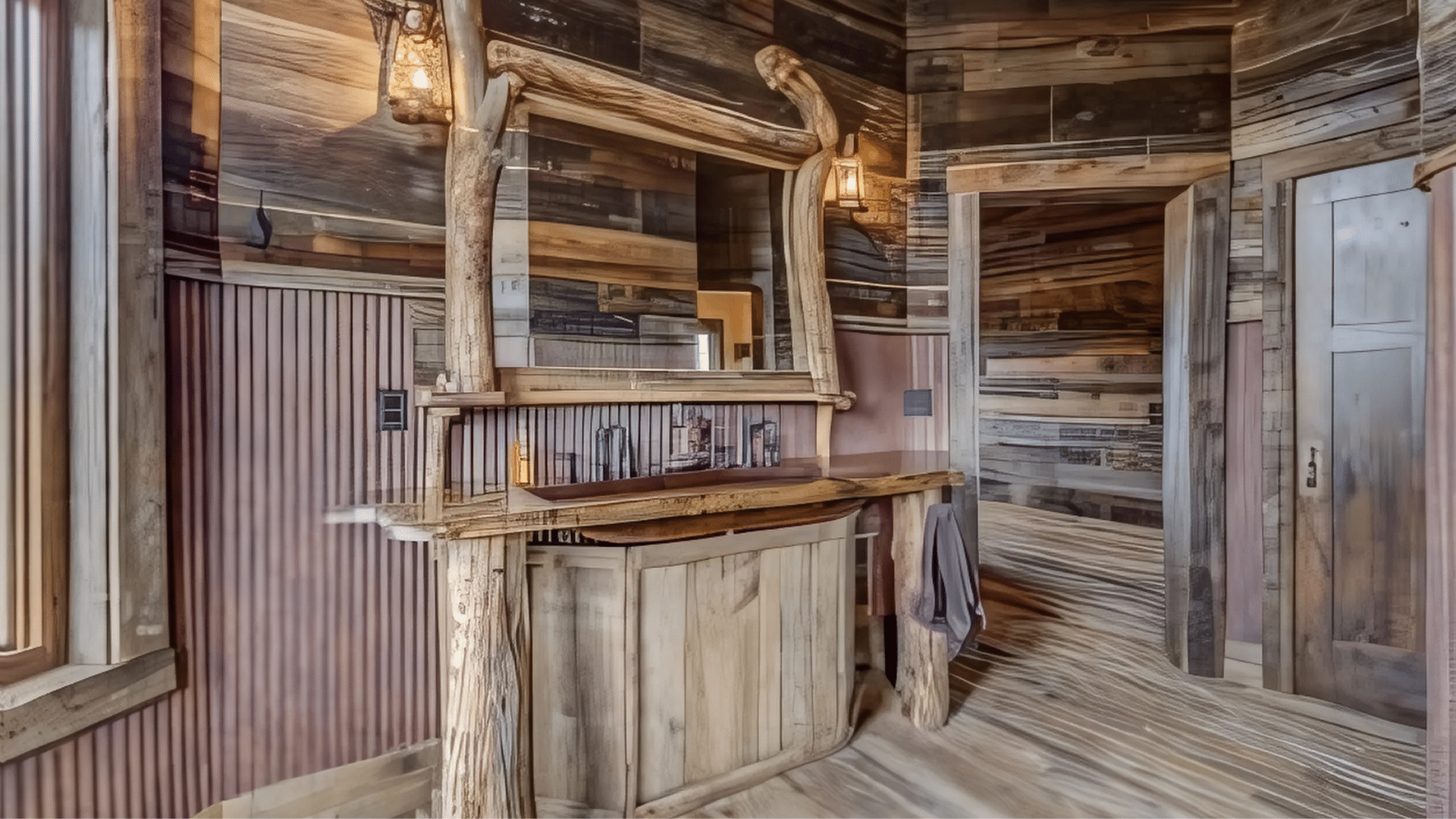
Rustic shiplap wainscoting uses horizontal wooden planks that are installed with visible seams between each board. This style connects to farmhouse and rustic interiors, adding a natural, worn look.
The visible seams give the wall character and a lived-in feel. Shiplap is perfect for creating a warm, welcoming space with a touch of rustic beauty.
This style is often linked with coastal, country, and farmhouse homes. Rustic shiplap wainscoting is great for living rooms, kitchens, and bathrooms in farmhouse-style or coastal homes.
It’s perfect for creating a relaxed, cozy atmosphere and can also work well in bedrooms or hallways for a soft touch. It’s a great option for spaces that need texture and a rustic feel.
9. Modern Geometric Wainscoting
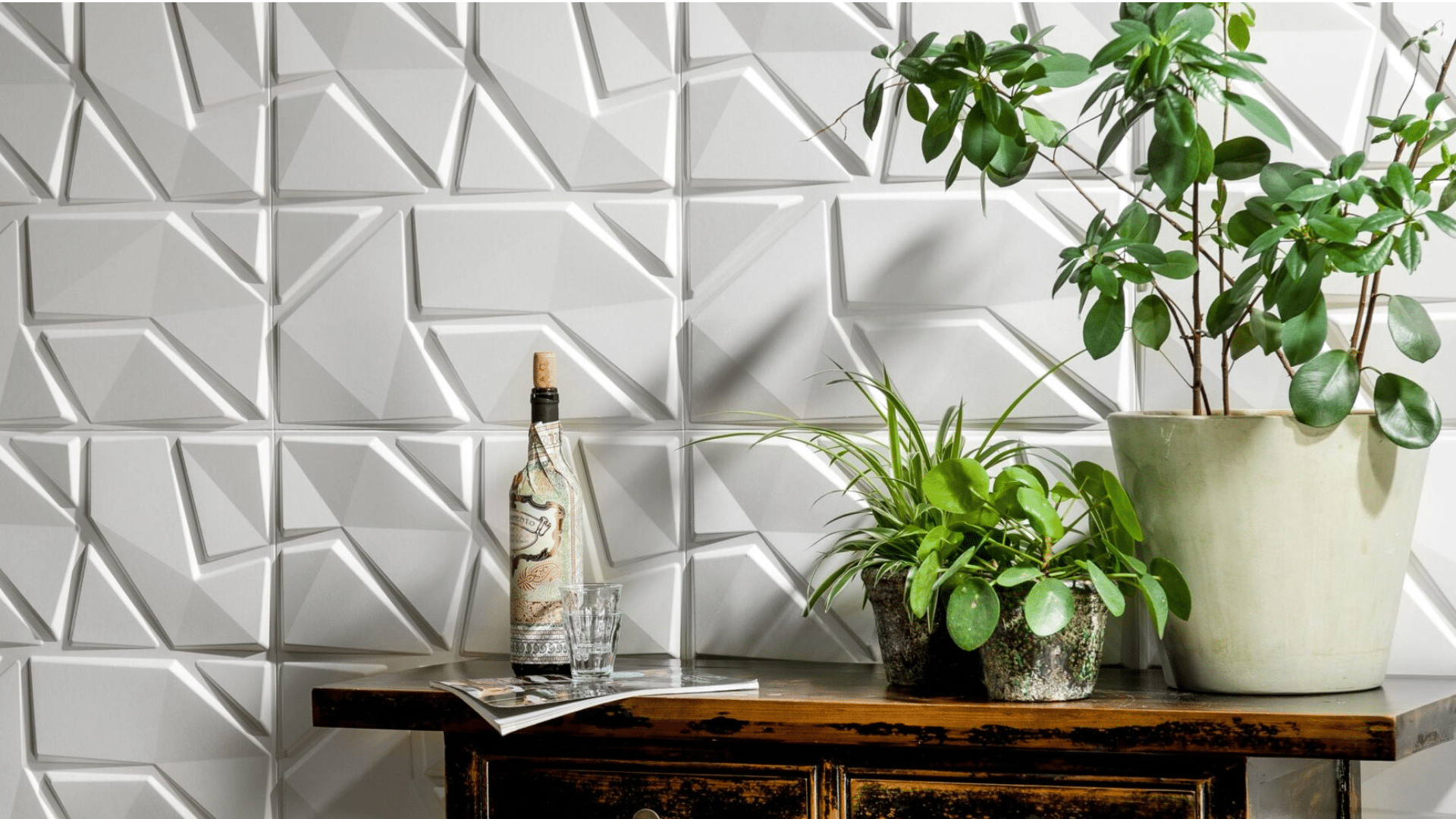
Modern geometric wainscoting uses bold patterns and contemporary designs, adding a fresh twist to traditional wainscoting styles. This style often uses different materials like wood, metal, or other blends to create unique, eye-catching patterns.
It’s a great choice for those looking to make a strong look with their walls and add a modern, creative touch to their rooms. Geometric designs offer clean lines and sharp angles for a fresh, lively look.
Modern geometric wainscoting is ideal for living rooms, office spaces, or contemporary kitchens. It works well in modern or factory-style homes and can create a bold main feature in any room. This style is perfect for homeowners who want to try out creative, up-to-date designs.
How to Pick the Best Wainscoting Style for Your Home?
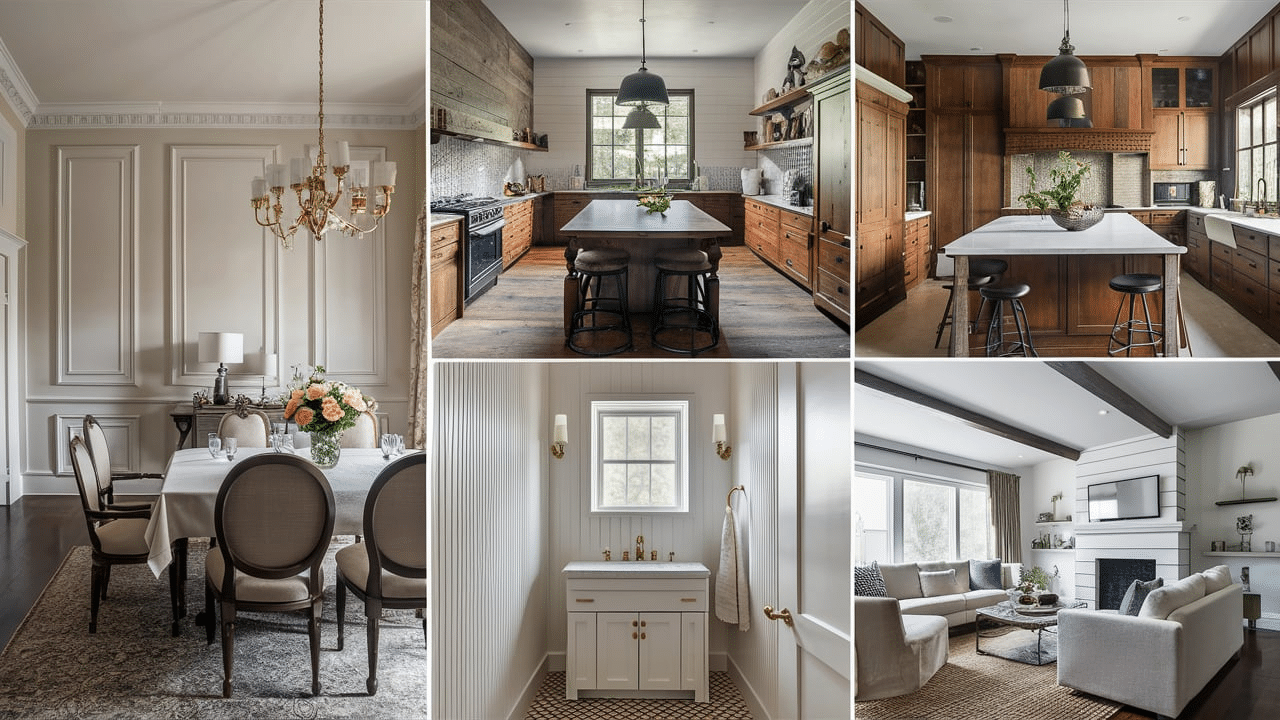
Wainscoting is a simple way to add texture and personality to your walls. But with so many styles available, it can be tough to know where to start. Don’t worry—here’s a quick guide to help you choose the best one for your space.
Think About Your Home’s Style
Is your home more traditional, modern, farmhouse, or coastal? Wainscoting should match the look and feel of your home. For example, raised panels work great in classic homes, while shiplap fits right in with a farmhouse look.
Look at The Room Size
Wainscoting can make a room feel cozy—or crowded. In small rooms, go with a simpler style like beadboard or short panels. If you have tall ceilings or a larger space, full-height wainscoting can add a bold, stylish touch.
Pick What Feels Right
In the end, it’s your home. Choose a style that you love and that makes the space feel more “you.” There’s no right or wrong—just what works best for your walls and your taste.
Wainscoting can make a big difference in how a room feels. Whether you want to keep things simple or make a bold statement, the right style is out there waiting for you.
Conclusion
Choosing the right wainscoting style doesn’t have to be complicated. If you’ve fallen in love with the classic elegance of raised panel, the simplicity of beadboard, or the modern feel of flat panel designs, there’s a style that will work beautifully in your home.
Remember that wainscoting isn’t just decorative—it’s also practical protection for your walls while adding value to your property.
Start by considering your home’s existing architecture, your budget, and your DIY comfort level. Don’t be afraid to request samples or mock up a small section before committing to an entire room.
The perfect wainscoting can transform an ordinary space into something extraordinary. Trust your instincts, use the guidelines we’ve shared, and enjoy the process of enhancing your home with this timeless design element.
Ready to get started? Your walls are waiting!

